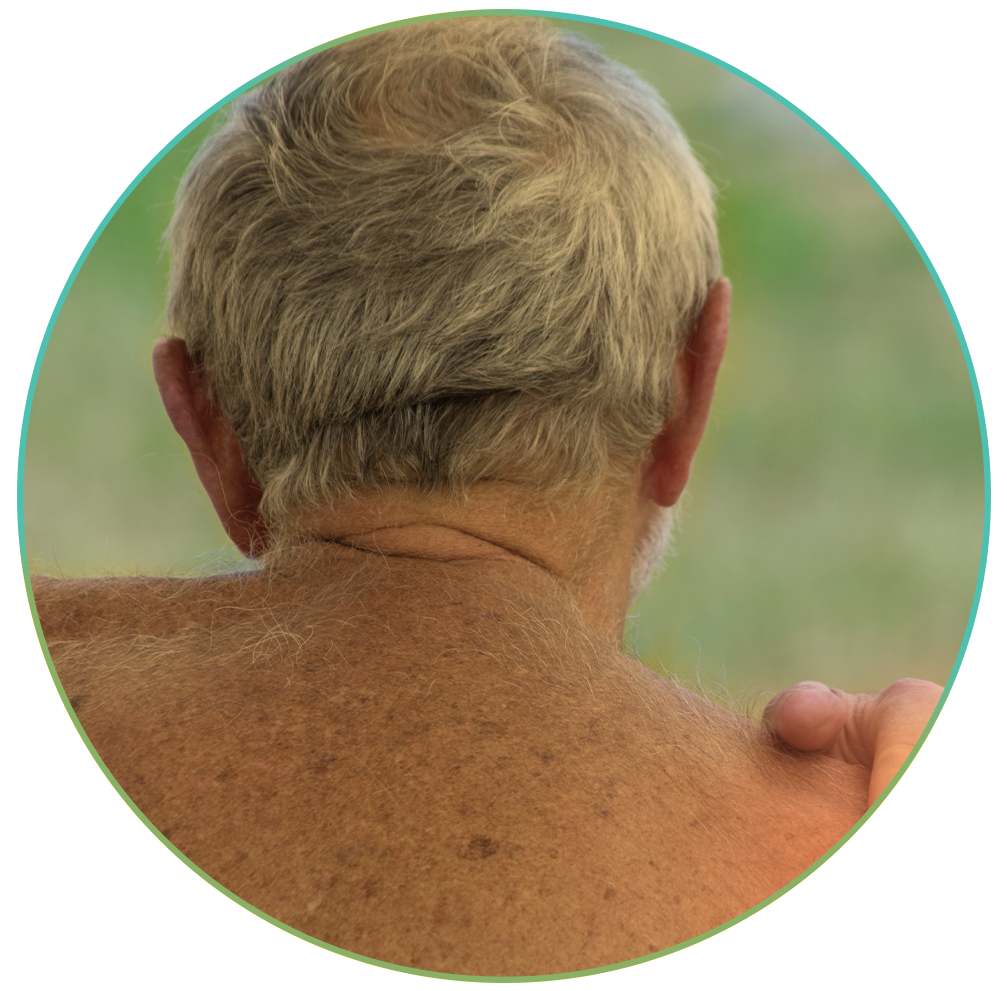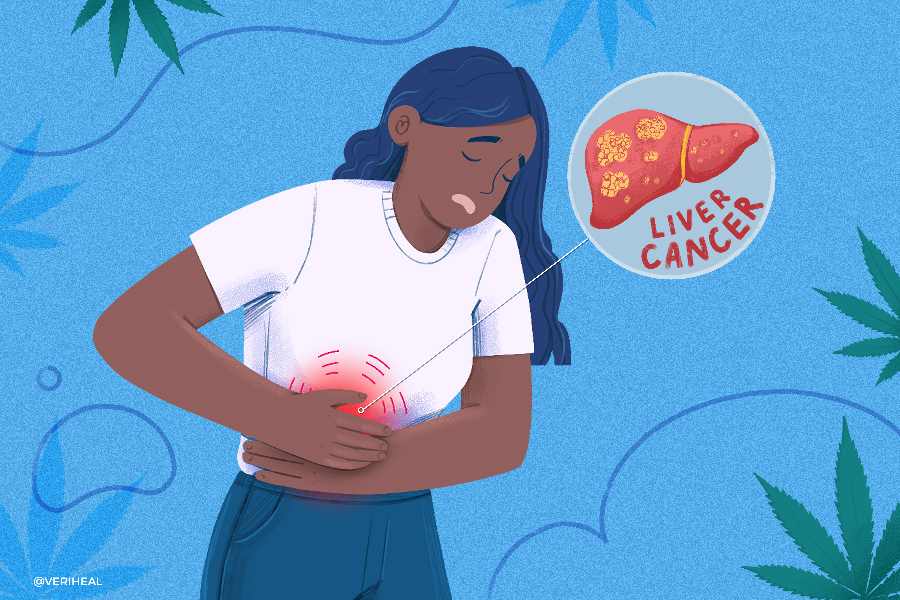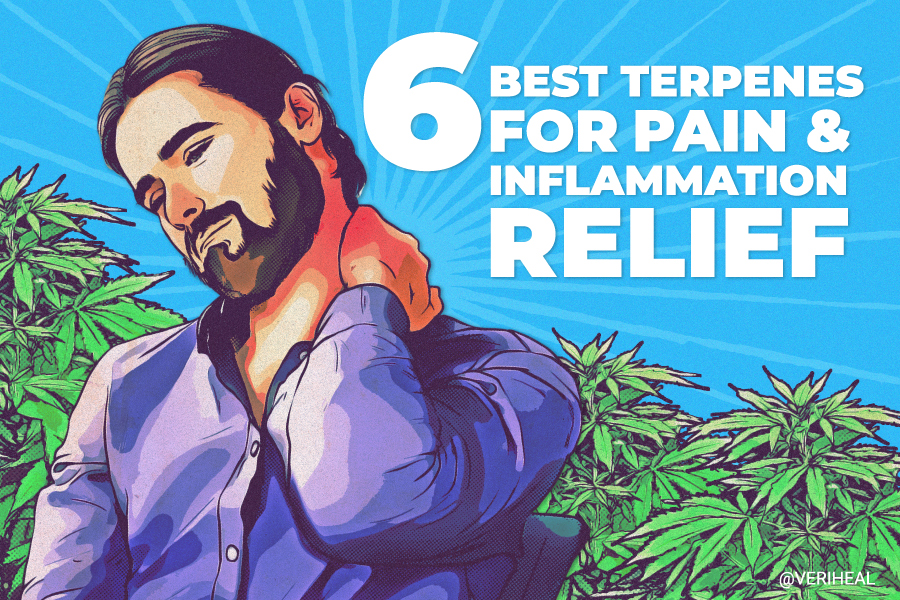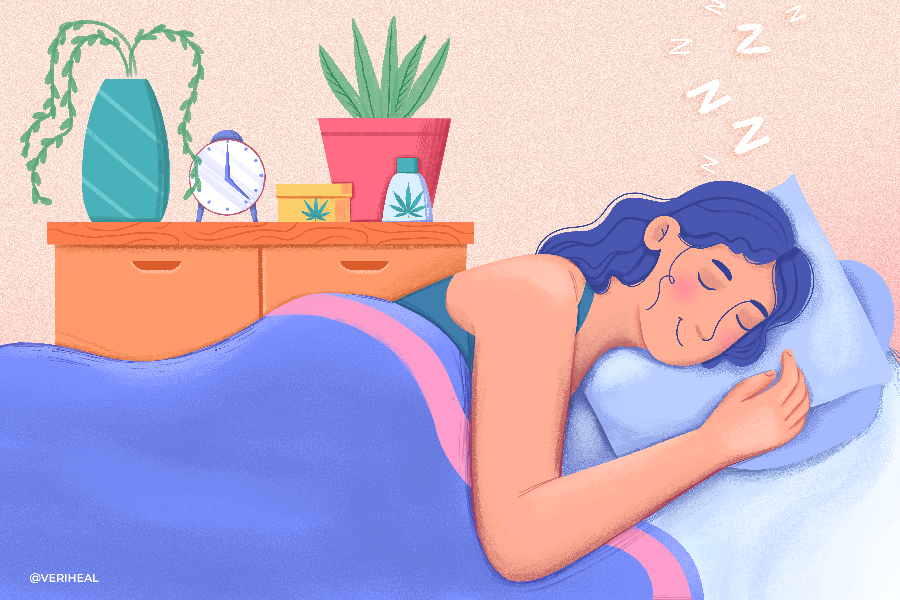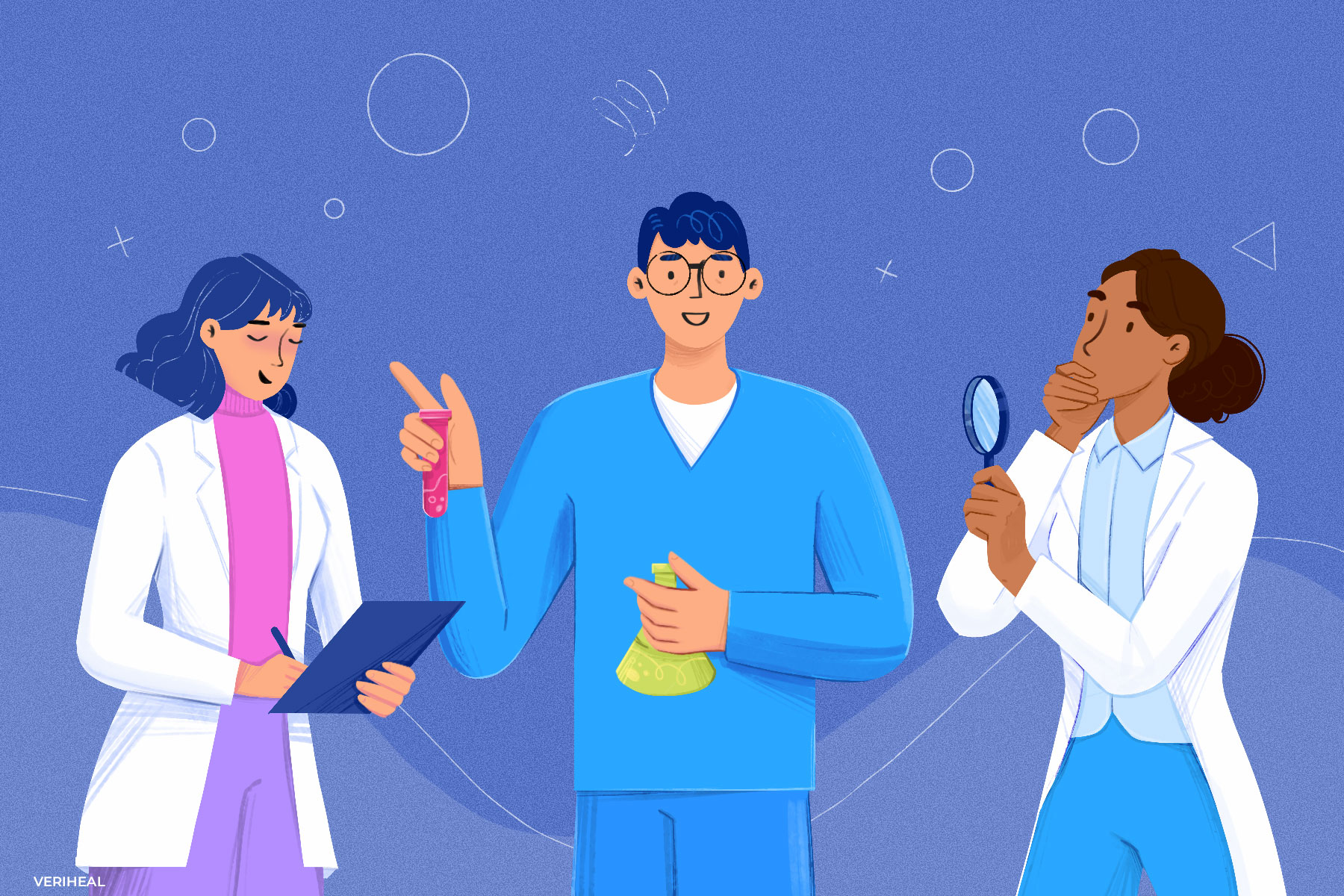Jaundice and Medical Cannabis Treatment

- What are the Signs, Symptoms and Types of Jaundice
- Jaundice Causes and Complications
- Can Medical Cannabis Help Treat Jaundice Symptoms?
- What Cannabis Preparations are Best for Jaundice Treatment?
- Talk to Your Doctor About Jaundice Treatments
Jaundice, caused by hyperbilirubinemia, is a medical condition that causes the skin and mucous membranes to turn yellow or orangish. Peripheral yellowing of the eye sclera (scleral icterus) may also occur. This yellow discoloration occurs due to a buildup of bilirubin in the blood.
Bilirubin (a pigment) is produced when red blood cells (RBC) break down. A doctor will diagnose jaundice when the bilirubin level is approximately 2 to 3 mg/dL or higher, at which point the yellow tinge will become visible. Normal serum levels of bilirubin are usually less than 1 mg/dl (10).
Hyperbilirubinemia doesn’t cause severe disease in adults per se, but rather may result from such. On the contrary, infants are susceptible to the effects of brain deposition of bilirubin. Severe cases of hyperbilirubinemia may cause a potentially fatal seizure-inducing and permanently brain-damaging condition called kernicterus. The good news is that kernicterus rarely occurs and is nearly always preventable nowadays via early diagnosing, testing, and phototherapy (5).
Common among newborn babies, jaundice is believed to affect 50%-60% of full-term babies and an estimated 80% of premature babies (9). While jaundice rarely occurs in adults, it is possible. However, adult jaundice does not result in kernicterus as it does in babies, so the priority in adults will be to treat the serious underlying condition and symptomatic itching using recommended cholestyramine to bind and reduce bilirubin levels directly.
Bilirubin deposition occurs for three reasons: excess bilirubin accumulates, excretion is impaired, or production increases for some reason. The symptoms of jaundice usually dissipate when a baby turns 2-3 weeks old (16). In adults, symptoms may linger for two weeks to one month or longer (6).
Suppose elevated bilirubin (hyperbilirubinemia) is detected right after the birth of an infant before they leave the hospital. In that case, the pediatrician or family doctor will explain to parents what that means and talk about recommended phototherapy treatment (“bili lights”).
However, suppose jaundice occurs and isn’t recognized outside of the hospital or clinic. In that case, untreated hyperbilirubinemia in infants may result in severe developmental delays and lifelong cognitive issues, including athetoid cerebral palsy and hearing loss (4).
Following a doctor-approved treatment plan like phototherapy is essential. Still, if you’re looking for a way to alleviate pain, itching, nausea and vomiting, low appetite, insomnia, or anxiety related to jaundice, cannabis could help (15).
What are the Signs, Symptoms and Types of Jaundice?
Patients who have jaundice will usually notice yellowing of the skin on the face, to begin with, before it spreads to the arms, belly, chest, and legs as bilirubin continues to rise. In babies with darker skin, jaundice may be more challenging to detect. Fortunately, doctors and nurses can perform blood tests to determine the specific level of bilirubin in a baby’s blood.
Some of the most commonly reported symptoms of jaundice (in both adults and babies), as reported by Medical News Today, include:
- Yellow-colored skin, mucous membranes, and the whites of the eyes
- Dark or cloudy urine
- Itchy sensation
- Pale stool
- Fatigue
- Abdominal pain
- Weight loss
- Nausea and Vomiting
- Fever (14)
Jaundice pathophysiology is classified into three main types: pre-hepatic, hepatocellular, and post-hepatic. Let’s take a look at the main categories of jaundice:
- Prehepatic (hemolytic) jaundice — This type of jaundice occurs when the number of red blood cells bursting surpasses the liver’s capacity to conjugate bilirubin. As a result, large quantities of unconjugated bilirubin build up in the blood. Examples of some common causes include autoimmune disease, thalassemia, transfusion reaction, and sickle cell anemia.
- Hepatic jaundice — When the uptake and conjugation of bilirubin are limited by hepatocyte dysfunction, a doctor will diagnose hepatic jaundice, which results in increased levels of conjugated and unconjugated bilirubin in the blood. This type of jaundice usually arises in patients with cancer, drug abuse history, congenital disorders, hepatitis, or liver diseases like cirrhosis.
- Posthepatic (obstructive) jaundice — Posthepatic jaundice occurs when water-soluble conjugated bilirubin collects in the blood. Typically, patients with obstructive jaundice will have restricted intestinal bile flow due to a blockage caused by scar tissue, gallstones, tumors, and inflammation.
You must visit your pediatrician immediately if your baby displays any of the following signs (4, 10). Symptoms of acute bilirubin encephalopathy (toxicity) in a baby with high bilirubin include:
- Very yellow or orange skin color that begins in the head and travels down to the toes
- Doesn’t wake or sleep easily
- Struggles to breastfeed or bottle feed
- Is fidgety or fussy
- Does not fill 4-6 wet diapers within 24 hours and dirty 3-4 diapers daily.
- Listlessness
- Difficulty waking
- High-pitched crying
- Poor sucking or feeding
- Backward arching of the neck and body
- Fever (13)
Jaundice Causes and Complications
The primary cause of jaundice is excess bilirubin, a yellow to orange-colored substance, in the blood. In healthy individuals, bilirubin is found in the body’s red blood cells, which are filtered from the bloodstream when they die.
Even though jaundice is rarely diagnosed in adults, it can be detected for several reasons. Some of the most common pathways to the infection include:
- Hepatitis — In most cases, jaundice is caused by a hepatitis type of virus. When this happens, a doctor will diagnose acute (temporary) jaundice or chronic (long-lasting, for six months or more) hepatitis. Jaundice occurs due to liver damage from hepatitis (26).
- Alcohol-associated liver disease — Consuming excess amounts of alcohol over a long period — usually 8-10 years — can cause severe liver damage. Alcoholic hepatitis and alcoholic cirrhosis are two specific types of alcohol-related liver disease that can damage the liver and trigger a case of jaundice.
- Opioid use — Regular use of illegal opioids, such as heroin and fentanyl, may cause hepatitis. Opioid use has been strongly tied to a spike in hepatitis C cases. This primarily occurs from unsafe needle-sharing practices, during sex, and through childbirth (27).
- Obstructed bile ducts — Proper bile transfer between the liver, gallbladder, and small intestine would not be possible without the bile ducts. When these thin tubes become blocked, bile can build up, thus resulting in jaundice. Rare liver diseases and gallstones may cause the bile ducts to become blocked.
- Pancreatic cancer — Of all the different types of cancer, pancreatic cancer is the 10th most common cancer in males and the 8th most common cancer in females (19). Malignant bile duct obstruction occurs in most cases of pancreatic cancer, meaning the risk of developing jaundice is high (3).
- Autoimmune disorders — The global incidence of autoimmune diseases of the liver—a leading cause of jaundice—is growing, with statistics showing that every one in 50,000 children are affected (1).
- Specific types of medicine — Acetaminophen, birth control (contraceptive) pills, penicillin, paracetamol, halothane, methyldopa, barbiturate, and steroids have been linked to jaundice (8). Some other drugs associated with cholestatic jaundice include chlorpromazine, ciprofloxacin, ofloxacin, cimetidine, phenytoin, naproxen, captopril, erythromycin, azithromycin, and dicloxacillin (17).
When severe cases of jaundice are left untreated for an extended period (about 3-4 years), it can result in a type of brain damage called kernicterus (11). Athetoid cerebral palsy, hearing loss, vision loss/impairment, seizures, cognitive and developmental issues, and dental complications are some medical problems that may arise in patients with jaundice-associated kernicterus.
There are several causes of jaundice in newborns, including:
- Physiologic jaundice – Affects 50 to 60% of full-term newborns in their first week or two, typically 3 to 5 days after birth. The baby’s liver isn’t able to sufficiently process bilirubin.
- Blood group incompatibility jaundice – When babies on their mothers have different blood types, the mother may produce antibodies that destroy the infant’s red blood cells. This causes bilirubin to build up in the blood quickly and may be diagnosed before birth or the first day after delivery. However, there is a drug that can be given to mothers that may prevent them from forming these antibodies in the first place.
- Breast milk jaundice – 1 to 2 percent of babies may develop breast milk jaundice because of substances in their mother’s breast milk that causes their bilirubin levels to increase.
Jaundice can also occur along with an infection or certain gastrointestinal tract disorders. Several other risk factors for developing jaundice include preterm birth, significant bruising during birth, blood type, breastfeeding, and race (East Asian ancestry)(9).
Can Medical Cannabis Help Treat Jaundice Symptoms?
Since further studies into the use of cannabis for children are necessary, cannabinoids are not a recommended method of treatment for babies with jaundice. On the other hand, although cannabis cannot be considered a cure or approved therapy for jaundice, the green plant’s therapeutic goodness could provide some symptomatic relief for adult patients.
Cannabinoids may be helpful as a complementary aid for treating jaundice patients. In addition to treating the cause of jaundice, doctors often recommend cholestyramine to help the itching caused by increased bilirubin (24).
Studies have also shown that the effects of cannabis-derived cannabinoids possess natural anti-inflammatory properties, not to mention anticonvulsive, immunosuppressive, appetite-promoting, anti-nausea, antioxidant, sleep aid, and neuroprotective properties (18).
Furthermore, cannabinoids could reduce abdominal pain in jaundice patients. In particular, the psychotropic compound THC (tetrahydrocannabinol) is more potent at relieving pain than its non-psychoactive counterpart CBD (cannabidiol)(7).
Fever and flu-like symptoms are also common in cases of jaundice. Although more clinical research into CBD use for flu symptoms is required to understand the benefits for jaundice patients fully, this globally-popular cannabinoid could help to ease aches, pains, stuffy nose, and sore throat (25).
The Endocannabinoid System (ECS) and Jaundice
The endocannabinoid system (ECS) controls and regulates many essential bodily functions, including sleep, pain management, memory, learning, emotions, hunger, inflammatory and immune responses, and temperature control (20).
Contained within the complex system are a variety of chemical signals and cellular receptors, which are scattered around the brain and body. These receptors signal the body to perform the aforementioned physiological processes.
Endocannabinoids are produced naturally by the human body, whereas the cannabis plant produces cannabinoids. Since endocannabinoids—which can bind to the CB1 or CB2 receptors—have been proven to control immune system functions, their role in treating autoimmune diseases like jaundice is significant (21).
Cannabinoids and terpenes can also act on non-ECS receptors, including TRP (transient receptor potential). This greater receptor diversity allows for the wide variety of effects of cannabis and the potential heightened therapeutic benefits known as “the entourage effect.” Activating TRPV1 and TRPA1 receptors are known to help ease symptoms of itching.
A 2020 review on pruritus (itching) notes how CBD, THC, dronabinol (synthetic THC), AEA, and PEA could play a role in reducing cholestatic itching by activating TRP receptors as well as CB1 and CB2 receptors (2). Beta-caryophyllene may also play a role in reducing itching (18). However, there is no evidence as to whether any cannabinoid or terpene can reduce bilirubin levels as prescription cholestyramine does.
What Cannabis Preparations are Best for Jaundice Treatment?
Choosing a method of administration depends on your personal preferences, such as how fast you want the effects to kick in, whether or not you want to control the dose, and the level of discretion you require when medicating with marijuana.
Older patients who experience jaundice may choose to medicate with cannabis as a way of reducing the problematic itching, along with relief from joint aches and pains. Since the skin and cannabinoids are lipophilic, cannabinoids can cross the epidermal barriers with the help of creams, lotions, oils, emollients, and patches.
Topical cannabinoids like CBD, PEA, and THC could potentially be used to help reduce itching, according to 2020 reviewed research (2). Few people, ironically, had increased itching or an allergic reaction, but these were rare.
So far, no systemic effects of topical cannabinoids have been reported. This could make topical cannabinoid applications even more advantageous because they could potentially avoid psychoactive side effects while delivering precision application relief.
While some users might choose to smoke marijuana as a way of indulging in the plant’s remedial or mood-boosting effects, others might select cannabis preparations that can be used on the move, such as edibles, capsules, tablets, pills, or transdermal patches that can be applied in the comfort of their own home. There’s also the option to buy vapes and tinctures, or if you prefer to drink your medicine, opt for some water-dissolvable cannabis.
Talk to Your Doctor About Jaundice Treatments
Once a doctor has performed a physical examination and has obtained an in-depth overview of your and your family’s medical history, a liver function test should be carried out. (10).
Once a diagnosis has been confirmed, you can talk about the potential of using medical marijuana with your doctor or healthcare practitioner. However, cannabis should not be used as a substitute for medications prescribed by your doctor. Doctors will commonly treat jaundice in adults by:
- Diagnosing and treating the underlying cause of the disease
- For itching, give cholestyramine
- For a blocked bile duct, a procedure to open it (such as endoscopic retrograde cholangiopancreatography (24, 12)
For infants, phototherapy is a recommended treatment option for jaundice with minimal side effects. Phototherapy works by chemically breaking down the bilirubin in the baby’s skin into non-toxic forms they can then excrete. The baby is placed under special white or blue light for one to two days, and their eyes are covered to protect them from the bright lights. During this time, the baby will also require close lab monitoring to ensure bilirubin levels are decreasing over time, as expected.
If bilirubin levels continue to increase despite phototherapy, a procedure known as an exchange transfusion could be necessary. This involves gradually removing the infant’s blood and replacing it with donor blood (9).
Complementary Treatments Worth Discussing with Your Doctor
With complementary treatments, you can give your body the best chance at fighting jaundice and recovering quickly. Examples of complementary therapies generally welcomed in jaundice include medical marijuana, eating a balanced diet, reducing alcohol consumption, engaging in frequent exercise, and limiting exposure to toxins from chemicals and other sources.
In terms of infants, mothers should ensure adequate feeding practices. According to the Mayo Clinic, “Breastfed infants should have eight to 12 feedings a day for the first several days of life (13). Formula-fed infants usually should have 1 to 2 ounces (about 30 to 60 milliliters) of formula every two to three hours for the first week.” They endorse these recommendations as the best jaundice prevention methods in infants.
Plus, with a report titled “Cannabis use improves retention and virological outcomes in patients treated for hepatitis C” proving that medical marijuana use may amplify the effectiveness of drug therapy for hepatitis C (a leading cause of jaundice,) the plant may be worth trying for patients with hepatitis-induced jaundice (23).
Remember that while medical marijuana and other complementary medicines can potentially enhance the quality of life for people who have jaundice, it’s important that you continue using any medication(s) or treatments, such as phototherapy, that your doctor prescribes. It’s also important for new marijuana users to start with a low dosage and work their way up slowly.
Note: The content on this page is for informational purposes only and is not intended to be professional medical advice. Do not attempt to self-diagnose or prescribe treatment based on the information provided. Always consult a physician before deciding on the treatment of a medical condition.
1. Autoimmune disease of liver. Autoimmune Disease of Liver – an overview | ScienceDirect Topics. (n.d.). Retrieved February 14, 2023, from https://www.sciencedirect.com/topics/medicine-and-dentistry/autoimmune-disease-of-liver
2. Avila, C., Massick, S., Kaffenberger, B. H., Kwatra, S. G., & Bechtel, M. (2020). Cannabinoids for the treatment of chronic pruritus: A Review. Journal of the American Academy of Dermatology, 82(5), 1205–1212. https://pubmed.ncbi.nlm.nih.gov/31987788/
3. Boulay, B. R., & Parepally, M. (2014). Managing malignant biliary obstruction in pancreas cancer: choosing the appropriate strategy. World journal of gastroenterology, 20(28), 9345–9353. https://www.ncbi.nlm.nih.gov/pmc/articles/PMC4110566/
4. Centers for Disease Control and Prevention. (2020, December 8). What are jaundice and kernicterus? Centers for Disease Control and Prevention. Retrieved February 7, 2023, from https://www.cdc.gov/ncbddd/jaundice/facts.html#:~:text=This%20yellow%20coloring%20is%20called,cerebral%20palsy%20and%20hearing%20loss.
5. Cochran, W. J. (2023, January 31). Jaundice in the newborn – children’s health issues. Merck Manuals Consumer Version. Retrieved February 7, 2023, from https://www.merckmanuals.com/home/children-s-health-issues/gastrointestinal-gi-and-liver-problems-in-newborns/jaundice-in-the-newborn
6. Daniel, C. (2022, February 24). What should I do I have if I have jaundice? Verywell Health. Retrieved February 7, 2023, from https://www.verywellhealth.com/all-about-jaundice-1760104#:~:text=2%20Depending%20on%20the%20viral,of%20bilirubin%20from%20the%20body.
7. Habib, G., Khazin, F., & Artul, S. (2021). The effect of medical cannabis on pain level and quality of sleep among rheumatology clinic outpatients. Pain Research and Management, 2021, 1–6. https://www.ncbi.nlm.nih.gov/pmc/articles/PMC8440085/
8. Jaundice (drug induced). jaundice (drug induced) – General Practice notebook. (n.d.). Retrieved February 14, 2023, from https://gpnotebook.com/simplepage.cfm?ID=1255145541
9. Jaundice. ucsfbenioffchildrens.org. (n.d.). Retrieved February 14, 2023, from https://www.ucsfbenioffchildrens.org/conditions/jaundice
10. Joseph A, Samant H. Jaundice. [Updated 2022 Aug 8]. In: StatPearls [Internet]. Treasure Island (FL): StatPearls Publishing; 2022 Jan-. Available from: https://www.ncbi.nlm.nih.gov/books/NBK544252/
11. Kernicterus. National Organization for Rare Disorders. (2023, January 12). Retrieved February 14, 2023, from https://rarediseases.org/rare-diseases/kernicterus/#:~:text=In%20most%20cases%2C%20the%20syndrome,to%20four%20years%20of%20age
12. Lindenmeyer, C. C. (2023, January 31). Imaging tests of the liver and gallbladder – liver and gallbladder disorders. Merck Manuals Consumer Version. Retrieved February 14, 2023, from https://www.merckmanuals.com/home/liver-and-gallbladder-disorders/diagnosis-of-liver,-gallbladder,-and-biliary-disorders/imaging-tests-of-the-liver-and-gallbladder#v13952993
13. Mayo Foundation for Medical Education and Research. (2022, January 6). Infant jaundice. Mayo Clinic. Retrieved February 7, 2023, from https://www.mayoclinic.org/diseases-conditions/infant-jaundice/symptoms-causes/syc-20373865
14. MediLexicon International. (n.d.). Jaundice: Causes, symptoms, and treatments. Medical News Today. Retrieved February 7, 2023, from https://www.medicalnewstoday.com/articles/165749#symptoms
15. National Academies of Sciences, Engineering, and Medicine; Health and Medicine Division; Board on Population Health and Public Health Practice; Committee on the Health Effects of Marijuana: An Evidence Review and Research Agenda. The Health Effects of Cannabis and Cannabinoids: The Current State of Evidence and Recommendations for Research. Washington (DC): National Academies Press (US); 2017 Jan 12. 4, Therapeutic Effects of Cannabis and Cannabinoids. Available from: https://www.ncbi.nlm.nih.gov/books/NBK425767/
16. NHS. (2022). Symptoms — Newborn Jaundice. NHS choices. Retrieved February 7, 2023, from https://www.nhs.uk/conditions/jaundice-newborn/symptoms/#:~:text=Jaundice%20usually%20appears%20about%202,usually%20lasts%20about%203%20weeks
17. Nilesh Mehta, M. D. (2022, July 8). Drug-induced hepatotoxicity. Overview, Metabolism of Drugs, Clinical and Pathological Manifestations of Drug-Induced Liver Disease. Retrieved February 14, 2023, from https://emedicine.medscape.com/article/169814-overview#:~:text=Some%20common%20drugs%20associated%20with,important%20cause%20of%20cholestatic%20jaundice.
18. Odieka, A. E., Obuzor, G. U., Oyedeji, O. O., Gondwe, M., Hosu, Y. S., & Oyedeji, A. O. (2022). The medicinal natural products of Cannabis Sativa Linn.: A Review. Molecules, 27(5), 1689. https://www.ncbi.nlm.nih.gov/pmc/articles/PMC8911748/
19. Pancreatic cancer – statistics. Cancer.Net. (2022, April 14). Retrieved February 7, 2023, from https://www.cancer.net/cancer-types/pancreatic-cancer/statistics
20. Peter Grinspoon, M. D. (2021, August 11). The endocannabinoid system: Essential and mysterious. Harvard Health. Retrieved February 14, 2023, from https://www.health.harvard.edu/blog/the-endocannabinoid-system-essential-and-mysterious-202108112569
21. Raypole, C. (2019, May 17). Endocannabinoid system: A simple guide to how it works. Healthline. Retrieved February 14, 2023, from https://www.healthline.com/health/endocannabinoid-system#:~:text=Endocannabinoids%20can%20bind%20to%20either,spinal%20nerve%20to%20relieve%20pain
22. Rise of hep C infections tied to opioid abuse – causes of hepatitis C. (n.d.). Retrieved February 14, 2023, from https://healthblog.uofmhealth.org/hep-c-infection-and-drug-abuse
23. Sylvestre, D. L., Clements, B. J., & Malibu, Y. (2006). Cannabis use improves retention and virological outcomes in patients treated for hepatitis C. European Journal of Gastroenterology & Hepatology, 18(10), 1057–1063. https://journals.lww.com/eurojgh/Abstract/2006/10000/Cannabis_use_improves_retention_and_virological.5.aspx
24. Tholey, D. (2023, January 31). Jaundice in adults – liver and gallbladder disorders. Merck Manuals Consumer Version. Retrieved February 14, 2023, from https://www.merckmanuals.com/home/liver-and-gallbladder-disorders/manifestations-of-liver-disease/jaundice-in-adults
25. Vandergriendt, C. (2019, September 16). Is it safe to smoke marijuana if you have a cold or the flu? Healthline. Retrieved February 14, 2023, from https://www.healthline.com/health/cold-flu/smoking-weed-with-a-cold#:~:text=A%202016%20review%20indicates%20that,CBD%20is%20generally%20considered%20safe
26. WebMD. (n.d.). Jaundice: Why it happens in adults. WebMD. Retrieved February 7, 2023, from https://www.webmd.com/hepatitis/jaundice-why-happens-adults
27. Why are hep C infections skyrocketing? opioid abuse to blame. Health Lab. (n.d.). Retrieved February 7, 2023, from https://healthblog.uofmhealth.org/hep-c-infection-and-drug-abuse#:~:text=These%20drugs%20include%20prescription%20medicines,an%20acute%20hepatitis%20C%20infection.












